Jonathan Offers Six Plus Two Rules for Creating a Successful Gift Shop at Your Haunt.
It’s Jonathan and Crystal here again, and this blog is based on episode 190 of our Haunt Weekly podcast, in which we were talking about gift shops. Our goal in focusing on this was to elevate haunt gift shops.
I want to say, first of all, there’s a lot more research that can be done on this, even though I spent several hours. This is an especially good topic to put out a call for your experiences, because every merch booth or gift shop is different. If we’re totally wrong, and everything I’ve looked up is horse crap, I need to know.
“We want to hear from both haunt owners and customers. If you’re a haunt customer and aren’t seeing what you want in haunt gift shops or merch booths, let us know,” said Crystal.
I want to begin by talking about the difference between a gift shop and a merch booth or merch shop. This is a pretty significant difference that’s lost on a lot of haunters. Basically, a gift shop sells gifts. A gift is an item intended to be given to another by the person buying it or it has some kind of special significance to the buyer. It’s a gift to themselves. A merch booth sells merchandise, which, in the case of a haunt, almost always features your logo or your name. If you have a booth where you sell a bunch of tee-shirts and hats with your logo, that’s a merch booth. If you’ve got a place where you sell maybe some of that but also sell other things, you have a gift shop. The idea here is the gift shop can sell merch, but a merch booth doesn’t sell gifts.
One of the goals of this blog is to get haunts away from a mindset of, “We only need a merch booth.” You need a gift shop. Just trust me on this—you need a gift shop.
“I know you’re going to tell us why very soon,” prompted Crystal.
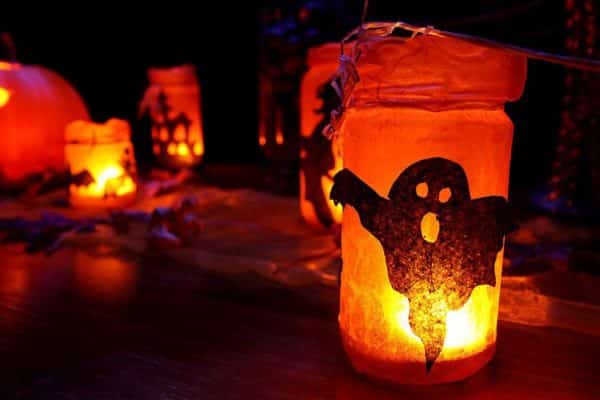
The Six Rules for a Successful Gift Shop
Yes, I’m going to be going through the six rules for a successful gift shop. The first rule is, the gift shop needs to be available to guests after they exit your attraction. How many haunts have we been to where there was a gift shop or merch booth that was accessible as we came in and was horribly inaccessible after we exited?
“Lots,” said Crystal.
The most successful gift shops and merch booths all do the same thing—they’re basically right on the exit line. Now, it helps if it’s also available at the entrance, too, because a lot of customers scout it out on the way in, peruse, eyeball, window shop, and then they might buy on the way out. Why is that? No one wants to carry their purchases when they’re going through a haunt. I mean, who’s going to buy that breakable mug and carry it through a 20-minute haunt?
“They’ll be so worried about not breaking their precious mug that they won’t to be able to get scared or enjoy it,” explained Crystal.
There’s the old joke about exiting through the gift shop, but there’s a reason for that. Ideally, the gift shop should be the first thing guests see when they hit that exit and know they’re safe. Eyes up should be on the gift shop. Depending on your layout, that may not be possible, so shoot for as close to that as you can get.
The second rule is—the gift shop or merch booth must be clearly marked and easy to see. In episode 187, we talked about signage. No matter where your gift shop is, make sure people don’t have to guess where to find it. If I want to see your gift shop, don’t make me wander around to figure out where it is or have to ask someone.
Third point—a walk-through gift shop is better than a concession stand or conference-booth type thing. The reason for this is simple—customers get psychologically attached to things they can touch, pick up, and hold. If they can hold a tee-shirt up to themselves and check out their look in a mirror, they’re going to be much more likely to buy that shirt. If a customer can walk around in an area, you can have a much greater variety of merchandise in the same amount of space than you would in an area where they only see a wall’s worth, because you’re moving them into a third dimension. Having a situation in which the customer can’t do that puts a barrier between them and what they want to buy. That barrier is they have to ask for help to simply see something they’re interested in. Yes, the concession stand approach may reduce theft, but you’ll sell less merch.
“And some people refuse to talk to anyone who’s selling stuff,” observed Crystal.
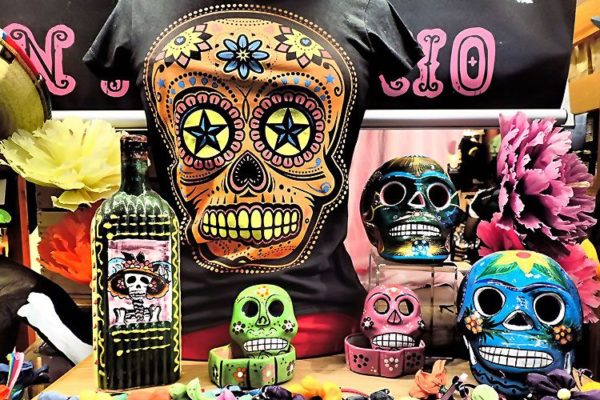
The fourth rule is to have a wide variety of product. We’ll get into more details on this one soon, but the main thing you want to focus on with a gift shop is making sure you have a wide range of prices and a wide variety of items. If I come to your gift shop with the last dollar I have, and I want to give it to you, you should have a way to take it from me. I don’t care if it’s an eraser, I don’t care if it’s a key chain, you should have a way to take it from me. If I’m Mr. Señor Moneybags, and I want to drop $100 or more, I should have a way to do that without having to clean out the entire gift shop. So, have a wide variety to appeal to every kind of customer that comes into your shop. You should always have a low buy-in and something you can sell up to. Upselling is important, but you can’t upsell if you don’t have a floor.
A guest might come in there for a $2 item, but then you can point out, “For a few bucks more, you could get this.” And remember, not everyone wants a tee-shirt. At the very least, if you’re just going to have a merch booth, have hats, wristlets, socks, mugs—a variety of things—and this means casting a wide net.
Rule number five is, make it super easy to pay. In haunts, there are too many gift shops that are cash only. Allow people to use a credit card. This is low-hanging fruit here, guys. I’m going to repeat information I gave previously—76% of people carry less than $50 in their pocket, and 23% carry less than $10. This means, if you don’t accept credit cards, you’ve immediately eliminated one quarter of your guests from making any kind of sizable purchase. You want to separate people from their money, not separate people from access to your products. Most people don’t have $60 in their pocket, so, if they want three tee-shirts, a hoodie, and a mug, and you’re cash only, they can’t do it. That’s just an outright lost sale. That’s 60 bucks you’ve left on the table simply because you didn’t take two extra minutes to set up Stripe or Square or whatever.
The last rule I’m going to mention is to closely monitor your inventory. This is huge. Square offers free inventory management, which is wonderful, and it can pair with Etsy, which we’ll talk about some more shortly. Inventory management is super important and not just so you can restock and get ahead of what’s about to run out. Depending on what you’re selling, that may not be possible, but knowing what’s selling well will help you iterate next year, the year after, and the year after that. You’ll also know what items to put on discount and which ones to raise the price on. You can make those adjustments completely on the fly.
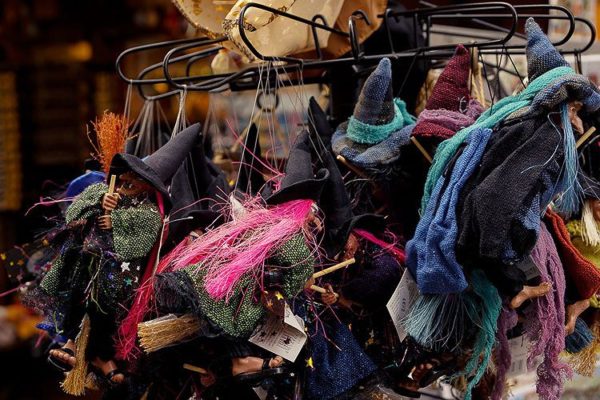
Why Having Merch is Important
Okay, so far, we’ve talked about why you should have a gift shop. Now we’re going to talk about merch, because this is important, no matter what. With merch, focus on low- to medium-cost, high-volume items with very high margins. Clothing is always a safe bet—there’s a reason why damn near every haunt at least sells tee-shirts, and selling tee-shirts is the least you can do.
“And I suggest that haunts change out their tee-shirts every year, because then it feels like a collector’s item that guests can only get that year,” said Crystal.
I ran a few numbers to help you out with the tee-shirt thing. For a black tee-shirt—because, of course, they gotta be black—with one-color printing purchased in bulk (more than 500), you’re looking generally at $5 to $6 per shirt. That’s not bad. You can sometimes find them as cheap as $4 or $3.50, but $5 seems to be a good, round number you can jump off from. That tee-shirt, especially if the design is cool, can be sold for $20 to $25, depending upon your audience. I mean, $20 is a pretty sweet spot for tee-shirts in 2019, and some places are able to get away with $25, especially if you upscale a little bit into full color or a nicer grade. That only adds a dollar or two per shirt, but it lets you add $5 to the price.
“If you offer a soft-shirt option, it’s a little pricier than the not-soft shirt, but I’m going to buy the soft shirt because I’ll actually wear it,” noted Crystal.
So, my advice is to order in bulk and order early. The reason for that is simple. Shirts take time to print, and then there’s the cost and time to ship. Most tee-shirt places offer free shipping if you have the time to wait. If you can’t wait for the slow boat from China, it can cost you over a thousand dollars just to get the product shipped. If you order now, you can get the slowest, cheapest shipping and save yourself a lot of money.
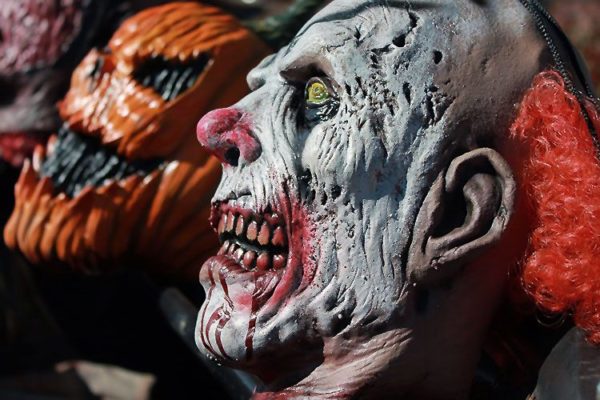
When it comes to ordering tee-shirts in bulk, one of the biggest questions that gets asked is what sizes to order. This is another reason to watch your inventory closely, because specific situations vary. I visited a whole bunch of tee-shirt websites and got the average of what they said to buy—5% extra small, 15% small, 25% medium, 25% large, 20% XL, and 10% XX or XXX. That breakdown seemed very consistent from site to site. Basically, your medium and your large combined are about half, and then it skews more to the larger side of the bell curve than the smaller side.
While you’re checking the tee-shirt sites, take a look at alternate clothing. Hats, wristbands, socks, hoodies, and bandanas are pretty cheap to produce. These can be your lower buy-in items, and jackets and hoodies can be higher buy-in items. Some haunts offer underwear, but, if you’re going to do that, make sure it fits your branding. For example, Haunted Hoochie really goes in on their Haunted Hoochie underwear, but that’s the brand. That’s what they do. If you’re trying to run a more family-friendly haunted house, you might think it’s perfectly innocent to put your name on someone’s buttocks or genitals, but that’s not how it’s going to be seen by the public.
So, to recap, $20 to $30 should be your main entry point. That’s what you want from the average individual customer. Here’s just a random list of merch items I’ve seen both in shops online and in person: posters, pen/stationery, stickers, patches, bags, mugs, Koozies, various home decor items, and anything you can put your logo on. If an item costs more than about 25% to 30% of what you’re intending to ask for it on sale, rethink it. I know that sounds like an absolutely bat shit, insane margin— 70% profit margin on a physical item. It’s not that crazy, and there are times when that’s a bit difficult to do, but that’s my advice. The main takeaway is to be thinking about what you can stock that fits your brand, meets that margin, and is something people will likely want. When it comes to strategies about merch, that’s basically it.
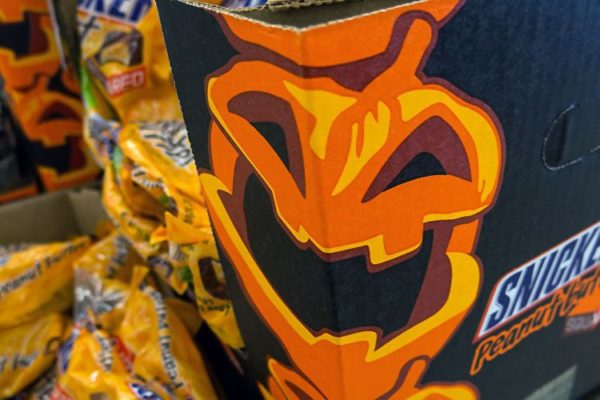
Expanding from Merch Booth to Gift Shop
The next step is taking the merch booth and elevating it to a gift shop. This is where you don’t just sell items that have your haunt logo or are directly connected with your most direct brand, so to speak, but selling items that, while they definitely compliment your brand, are unrelated to you. Here you can get much more expensive. There’s a hard ceiling for what people are going to pay to advertise your haunt, and often they’re buying merch because they love you, not necessarily because they need that tee-shirt. There’s an upper limit to that support, but, with gifts, that upper limit disappears. Now you’re selling cool things people love just for what they are. The sky’s the limit with gift shop items, it truly is. Once again, you’re going to want to offer a wide range of buy-in points and something at every price point—everything from $2 to $5 pins to $350 for an awesome piece of artwork. For example, Crystal and I always buy gifts and, for our money, the more unique, the better.
For unique and one-of-a-kind stuff, contact your local artists. For more commercial items and mass-produced stuff that’s still unique-ish to you, hit up Alibaba and similar marketplaces for items with a relatively low buy-in that can be turned around for high margin.
What everyone fears with these types of suppliers is that they have to buy 10,000 of something. For some things, that’s true, but you can often buy just 50 or 100 of something, which is a perfectly reasonable buy-in for a gift shop. One caveat: Watch out for copyright and trademark issues. Some of these sites aren’t vetted, so maybe don’t get your unlicensed superhero merch there. But these are great sources for Gothy, batty, dark jewelry. Many items require very low volume and are $2 a unit. You can turn one of those around and sell it for $30.
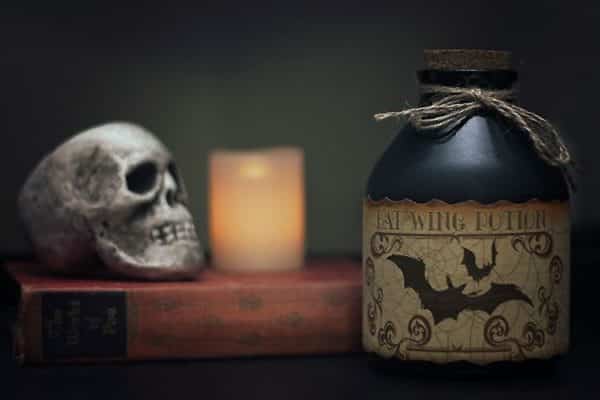
Also, you can go to the Halloween and Party Expo at HAuNTcon. It’s coming up in January here in New Orleans and then moving to Dallas. There are tons of vendors there selling bulk items, and many of them have reasonable buy-ins. If you go to HAuNTcon, don’t just stay on the HAuNTcon side. I know it’s tempting—we all love our HAuNTcon vendors. They’re awesome. But, if you’re looking to populate a gift shop, check out the other side.
“Although the HAuNTcon side has the more unique items from the smaller vendors,” observed Crystal.
You want to find things that aren’t specific to your haunt or carrying your logo but that are difficult for people to find elsewhere. You want it to feel like the gifts you’re offering are a once-in-a-lifetime chance for people to buy. You’ve got to find a way to strike that balance. It’s got to fit with what you’re doing, and it’s got to feel like a once-in-a-lifetime opportunity. If you hit that chord, the guest is likely to buy it, and they’re likely to pay a premium for it.

The Seventh and Eighth of the Six Rules
I know I said six rules, but I just thought of another one. Have an online store. Seriously. I did a search for “haunted house gift shop” and “haunted house merch booth” online. You know how many I found? One. Try to have an online store. Etsy.com can be a great place to get started. An online store lets you sell every month of the year. This also helps if someone sees something at your haunt gift shop and then decides after they get home that they have to have it. An online store gives them a second chance to get it, and it costs next to nothing. If you use Etsy, you can tie it into Square, and your inventory can be controlled super magically that way. That said, I’d encourage you to have some store exclusives and make sure your online store prices are higher than your in-person store prices. There are two reasons for this—to encourage people to buy on site and because places like Etsy take a fee.
OK, here’s one more: Encourage social media usage in the online store. We, as an industry, have a weird relationship with the social media we need and thrive upon. We want people to say they’re at our attraction and tell their friends about it, but we don’t want them showing walk-throughs of our haunt. Do everything you can to encourage sharing and checking in, and consider offering a discount in the store (a small one, like $5 off a purchase of $50 or more). Make sure it’s difficult for people shopping to price compare, because your prices are going to be higher than Amazon’s or other stores. If you use bar codes, make sure they’re your barcodes, because Amazon and similar apps have the ability to read codes and find them on their site.
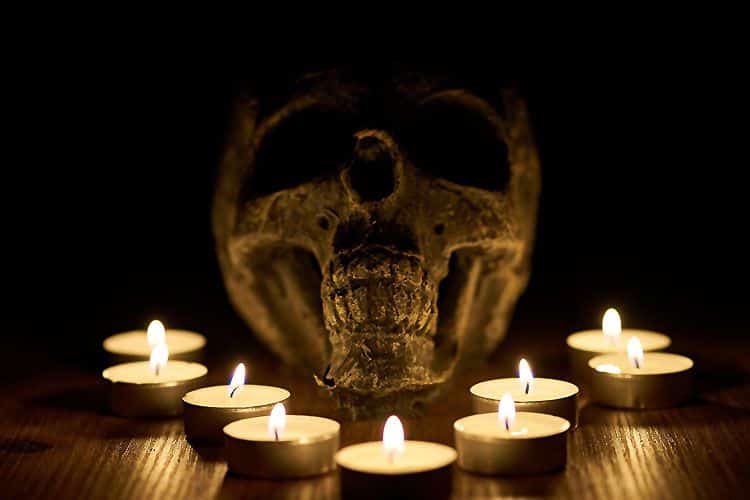
Here’s what you always need to remember about why you have a gift shop. This is the dirty, ugly truth. This is the “greed is good” moment of this podcast. You’re not offering value to your customers. What you’re doing is exploiting a happy and semi-captive audience. When people leave a haunt, they’re all smiles and giggling and amped after hanging with their friends or family. They walk into your gift shop, and it’s magic hour. They’re riding high, and you’re collecting dollars on that high. That’s how theme parks work—get people when they’re happy.
Finally, don’t forget drinks and snacks. You likely have a separate concession stand for these, and that’s great. You can do a lot more with a concession stand than you can do in a gift shop in terms of food and beverages. In a gift shop, you’re basically limited to a tiny refrigerator selling sodas and a shelf with a few bags of chips and some candy bars or whatever. You won’t cannibalize yourself much with this. If somebody wants a hot dog or popcorn or whatever, they’re going to go to the concession stand. But if someone just needs a soda, don’t make them go to a second location. Give them what they want right there. Sodas are easy, impulse buys, and you can get them at Sam’s for 30 cents a can. Easy peasy. Chips are about the same. This keeps customers from leaving the gift shop because they’re thirsty or hungry.
So, that wraps up our blog on why you need a merch booth and, especially, a gift shop.